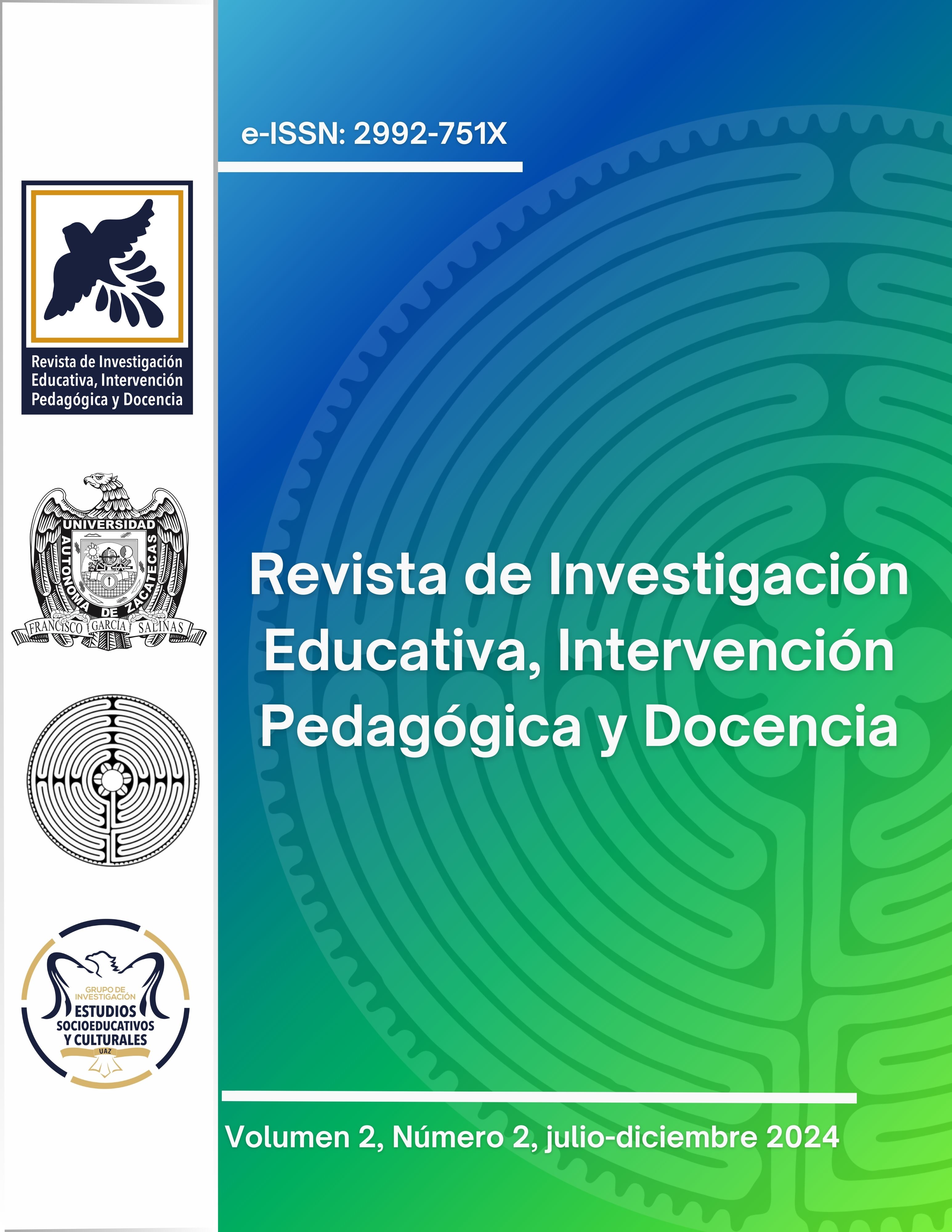College students’ conceptions of note-taking in class and the relationship to their learning.
Published 2024-07-05
Keywords
- Learning strategies,,
- memorization,,
- metacognitive strategies
Copyright (c) 2024 Revista de Investigación Educativa, Intervención Pedagógica y Docencia

This work is licensed under a Creative Commons Attribution-NonCommercial-ShareAlike 4.0 International License.
How to Cite
Abstract
The present research provides an overview of the conceptions that university students have about the activity of note-taking during class and what is the relationship of this practice with their learning. According to the results, students point out that class notes have two functions: as study material to pass the evaluations and as reference material during their training process. Regarding annotation practices, despite the fact that students mention the use of complex processes during the elaboration of class notes such as the incorporation of schemes or paraphrases and even reelaboration, these seem to focus on the recovery of some elements of information. In relation to study practices, memoristic strategies predominate over those that propose learning from reflective processes.
Downloads
References
- Asensio, M. (2018). La lectura y la escritura académica en educación superior: el taller como estrategia didáctica. Psychology, Society and Education., 11, 205-219. https://ojs.ual.es/ojs/index.php/psye/article/view/2079
- Carrera, F., Culque, W., Barbón, O., Herrera, L., Fernández, E. y Lozada, E. (2019). Autopercepción del desempeño en lectura y escritura de estudiantes universitarios. Espacios, 40, 20-29. https://revistaespacios.com/a19v40n05/a19v40n05p20.pdf
- Castelló, M. y Monereo, C. (2005). Students’ Note-Taking as a Knowledge-Construction Tool. L1-Educational Studies in Language and Literature, 5(3), 265-285. https://doi.org/10.1007/s10674-005-8557-4
- Chiecher, A., Donolo, D. y Rinaudo, M. (2005). Percepciones del aprendizaje en contextos presenciales y virtuales. La perspectiva de alumnos universitarios. Revista Educación a distancia RED, 13, 1-10. https://revistas.um.es/red/article/view/24401/23741
- Chóez, J. S. M., Beltron-Cedeño, R. A., y Beltrón-Cedeño, V. C. C. (2021). Aprendizaje significativo, una alternativa para transformar la educación. Dominio de las Ciencias, 7(2), 915-924. https://doi.org/10.23857/dc.v7i2.1835
- Espino, S. (2017). La toma de apuntes. Visión de los estudiantes universitarios mexicanos. Revista iberoamericana de educación superior, 8(22), 64-83. http://www.scielo.org.mx/pdf/ries/v8n22/2007-2872-ries-8-22-00064.pdf
- Espino S. y Miras M. (2011). Relaciones entre el enfoque de aprendizaje de los estudiantes universitarios y su representación de la toma de apuntes. Anuario de Psicología, 41, 135-153. https://revistes.ub.edu/index.php/Anuario-psicologia/article/view/8242
- Espino S. y Miras, M. (2016). Representación, enfoque de aprendizaje y uso efectivo de los apuntes en estudiantes universitarios. Sinéctica, (47), 2-17. https://sintetica.iteso.mx/index.php/SINTETICA/article/view/646
- García, N., Robaina, T. y Aparicio, A. (2019). Caracterización de la toma de apuntes en estudiantes universitarios. Atlante. Cuadernos de Educación y Desarrollo (2a Época), 2, 1-21. https://www.eumed.net/rev/atlante/2019/06/apuntes-estudiantes-universitarios
- Luo, L., Markeya, S. y Flanigan, E. (2018). Laptop versus longhand note taking: effects on lecture notes and achievement. Instructional Science, 46, 947-971. https://www.researchgate.net/publication/325792070_Laptop_versus_longhand_note_taking_effects_on_lecture_notes_and_achievement
- Nakayama, M., Mutsuura, K. y Yamamoto, H. (2017). The possibility of predicting learning performance using features of note taking activities and instructions in a blended learning environment. Int J Educ Technol High Educ 14, 6. https://doi.org/10.1186/s41239-017-0048-z
- Ñaupas, H., Valdivia, M., Palacios, J., y Romero, H. (2018). Capítulo VIII. La medición y el muestreo. En Metodología de la investigación Cuantitativa - Cualitativa y Redacción de la Tesis (5.a ed., pp. 342-345). Ediciones de la U.
- Piolat, A. (2007). Effects of Note-Taking and Working-Memory Span on Cognitive Effort and Recall Performance. Studies in Writing, 109-124. https://doi.org/10.1108/s1572-6304(2007)0000020008
- Pham, M. P. K. (2020). The Application of Metacognitve Note-taking Skills in Reading Lessons to EFL College Students. Journal of Effective Teaching in Higher Education, 3–30-49(1). https://eric.ed.gov/?id=EJ1253899
- Salame, I. I., y Thompson, A. (2020). Students’ Views on Strategic Note-taking and its Impact on Performance, Achievement, and Learning. International Journal of Instruction, 13(2), 1-16. https://doi.org/10.29333/iji.2020.1321a
- Salgado-Horta, D., y Maz-Machado, A. (2013). Toma de apuntes y aprendizaje en estudiantes de Educación Superior. Revista Complutense de Educación. https://helvia.uco.es/bitstream/handle/10396/11764/40058.pdf?sequence=1


